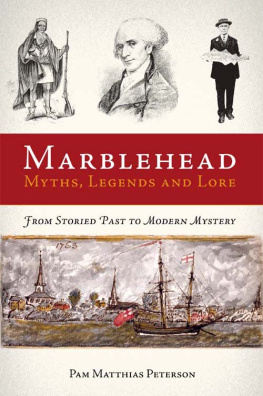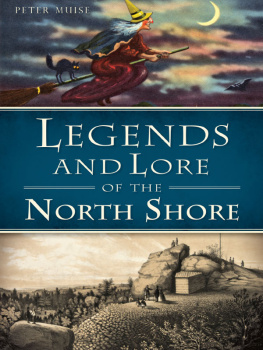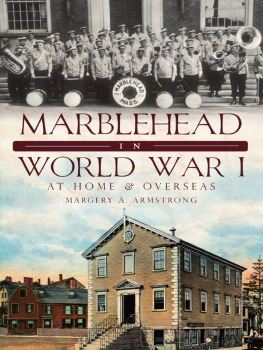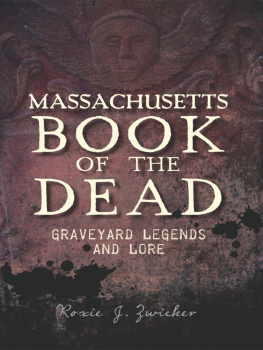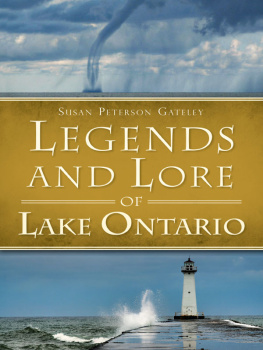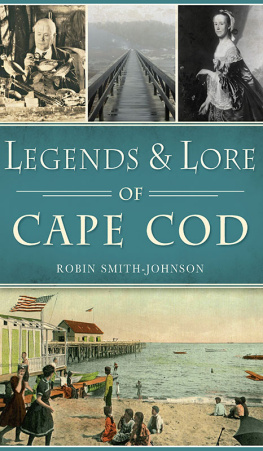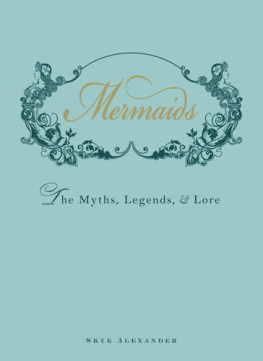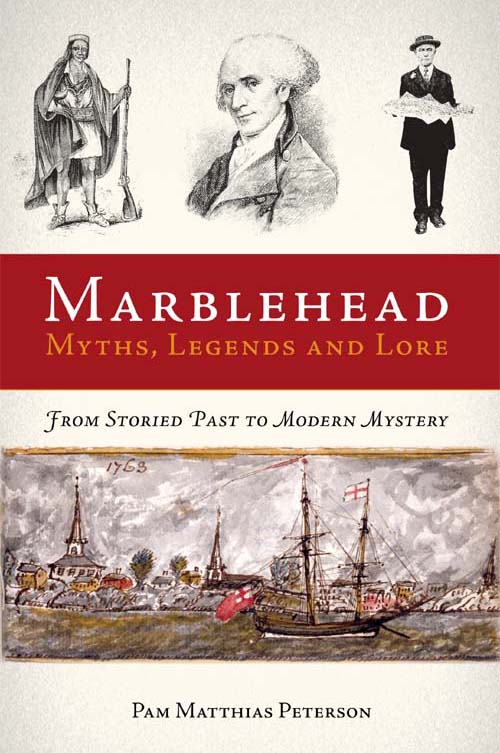M ARBLEHEAD
M YTHS , L EGENDS AND L ORE
M ARBLEHEAD
M YTHS , L EGENDS AND L ORE
F ROM S TORIED P AST TO M ODERN M YSTERY
Pam Matthias Peterson

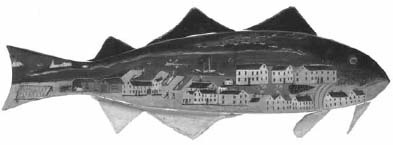
Published by The History Press
Charleston, SC 29403
www.historypress.net
Copyright 2007 by Pam Matthias Peterson
All rights reserved
Cover Images (clockwise from top left):
This portrait depicts King Philip, the Native American sachem or chief who led the rebellion known as King Philip's War. Illustration from Nooks and Corners of New England, S.A. Drake, 1875. Portrait of Elbridge Gerry, after an engraving. Illustration from Nooks and Corners of New England, S.A. Drake, 1875. J.O.J. Frost, circa 1920s. The artist is holding his carved and painted cod. Courtesy of the Marblehead Museum & Historical Society. Marblehead Harbor, from the journals of Ashley Bowen. Dated 1763, this is believed to be the earliest view of the town. Courtesy of the Marblehead Museum & Historical Society.
First published 2007
Second printing 2008
e-book edition 2011
ISBN 978.1.61423.224.7
Library of Congress Cataloging-in-Publication Data
Peterson, Pam Matthias.
Marblehead myths, legend and lore / Pam Matthias Peterson.
p. cm.
Includes bibliographical references and index.
ISBN 978-1-59629-256-7 (alk. paper)
1. Tales--Massachusetts--Marblehead. 2. Marblehead (Mass.)--Folklore. I. Title.
GR110.M4P48 2007
398.2097445--dc22
2007017132
Notice: The information in this book is true and complete to the best of our knowledge. It is offered without guarantee on the part of the author or The History Press. The author and The History Press disclaim all liability in connection with the use of this book.
All rights reserved. No part of this book may be reproduced or transmitted in any form whatsoever without prior written permission from the publisher except in the case of brief quotations embodied in critical articles and reviews.
Contents
Acknowledgements
I would never presume to call myself a Marbleheader. I've only lived here for about thirty years, and that doesn't count. I'm not a native, and have no connection with the town except what has been forged through living, working and loving everything connected with it. It has been a great place to raise a family, to make friends and establish a life. The history of Marblehead is a fascinating source of connections, significant both locally and in the wider world. Most of all, Marblehead itself is the inspiration for this book.
I feel very fortunate to have had the support of my family, my husband, my children Matthew and Joie and the great help of many friends. Paula Morse read the manuscript with her talented skill, care and perception. Anna Geraghty helped with photos and as always went above and beyond what was asked. My friends and colleagues at the Marblehead Museum & Historical Society, staff and volunteers, provided laughter, encouragement and constant interruptions as they always do. Many thanks to Karen MacInnis, Judy Anderson, Cinny Rockett, Joan Goloboy, Marcia Hunkins and everyone else. Thanks also to Gene Arnould, Judy Jacobi and Nick and Susan Fader.
Introduction
Marblehead Myths and
Legends
Myths and legends can be important clues to cultural history. A place is shaped by its myths and they in turn shape it. Stories are told long before they are written down; many folk tales are added to, adapted or changed before the final version is reached. Myths and legends generally have within them a kernel of truth, and that is of interest to historians. Legends can represent a link or a lead to wonderful information or insight hidden within the story, a starting place in the hunt for historical treasure. Although many stories that we know and love would be discarded as they are not fact, they must not be ignored as primary sources of oral history.
Marblehead is a town that is unusually rich in myths and legends. Fishermen are well known as storytellers, and have a reputation for making their tales a bit larger than the truth, so perhaps that is an ingredient in some of the great Marblehead myths. Marblehead is also rich in history, and many of these stories are true. Some of them began with a few facts and were embroidered and adapted until they reached their present form. All of the tales help to shape a true picture of Marblehead. They date from the earliest times, when stories were handed down among friends and family for protection, enjoyment and pride in the good old town, and continue through the centuries to the present. The history of the town is interwoven with its culture, and all of these myths and legends come together to make the history of Marblehead's people, places and events.
Chapter 1.
Early Times and Early
Stories
To start at the beginning, Marblehead was first a fishing station, serving as an outpost for fishermen. Gradually families began to arrive and Marblehead was established as a village in 1629. All activities were related to the fishing trade. The town grew up around Little Harbor, where the first meetinghouse was built on Old Burial Hill. From this vantage point the small settlement could look out to sea. Fishing schooners went out beyond the protection of the harbor, fishing mostly for cod.
The lives of fishermen and their families were uncertain. The fishing vessels were small, the seas were rough, the weather was unpredictable and the coastline was rocky. There were many dangers for fishermen, and their lives were hard. Fishing is a cold, wet, physically demanding job at the best of times. Fishermen and their families were superstitious, always looking for signs and omens. They were largely uneducated and very much at the mercy of external forces that they often did not understand and could not control.
Fish Tale
One of the earliest myths goes back to the time of settlement in the early 1600s, when Marblehead was a fishing outpost and English investors were anxious to encourage new settlers to come here. Many tales were told of the colonies in the New World to enhance their image and encourage immigrants. Captain John Smith wrote of the advantages of fishing as a trade, and King James piously added, In truth tis an honest trade, twas the apostles own calling.

Mariners Compass, engraving. Illustration from The Practical Navigator , London, 1793.
There are several accounts of the huge quantity of fish in the harbor at Marblehead. These fish were reported to be so large and the harbor so full of them that a person could walk from one side of the harbor to the other on the backs of them without ever getting his feet wet. Fishermen continually rejoiced in the variety and abundance of their catch. This story is repeated over and over about Marblehead, and also about other colonial areas that were good fishing grounds. It could not possibly be true, but it is in a sense an advertising claim, like the streets being paved with gold, which was exaggerated to advertise Marblehead and to attract new colonists.

